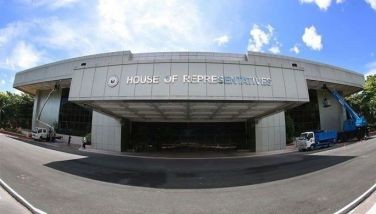Crisis in medical education looms as graduates flunk board exams
August 13, 2004 | 12:00am
Experts warned of a looming crisis in the country’s medical education as the passing rate in the annual licensure examinations for physicians dipped to 50 percent.
Dr. Jose Ramirez, head of the Philippine Regulation Commission (PRC)’s board of medicine, said the decline in the passing rate of the licensure examination for doctors over the past four years is alarming.
"The (medical) board has noted with increasing concern that the passing average for each succeeding examination has declined each year," Ramirez told a forum called "Medical Education in the Philippines," organized by the National Academy of Science and Technology.
Ramirez said that in the August 2001 board examinations, 64.3 percent of the examinees passed. But in the August 2003 exams, the passing rate went down to 55.6 percent. It plunged further to 51.9 percent last February.
Ramirez also noted the proliferation of "fly-by-night" medical schools.
"The board worries that the quality of medical education in our country may have deteriorated in recent years, influenced by the unchecked proliferation of medical schools and of pirating of faculty members from established schools," he said.
Ramirez attributed the decline in passing rate to a "deterioration" in the admission and screening of prospective medical students.
For his part, Dr. Fernando Sanchez, executive director of the Association of Philippine Medical Colleges (APMC), said that in 1950, there were only three medical schools in the country.
But during the ’70s, local government units (LGUs) encouraged the private sector to finance medical schools in their localities to address the shortage of doctors in rural areas.
Sanchez said the LGUs encouraged the proliferation of medical schools to produce more doctors since 40 percent of medical graduates migrated to the United States.
"Together with the virtual closure of the US to foreign doctors in 1975, the opening of medical schools improved the doctor-population ratio as well as the geographical distribution of physicians. But the quality of medical education suffered," Sanchez said.
Sanchez claimed the decline of quality medical education could be blamed on the lack of competent faculty members.
He said academically unqualified students are even admitted to medical schools that do not have adequate training facilities.
There are now 36 medical schools operating this school year and 12 of them are located in Metro Manila, Sanchez said.
He said the lack of competent faculty members prompted the new schools to pirate teachers from reputable medical institutions.
The situation gave birth to the so-called flying doctors which is "bad for (the) medical education," Sanchez said.
Aside from this, Sanchez claimed only 19 medical schools have their own teaching hospitals as required. The policy would have allowed students to have better hands-on training experience.
Another medical expert who requested anonymity said the Commission on Higher Education (CHED) should be primarily blamed for the country’s deteriorating medical education.
"CHED has abdicated its role of monitoring and controlling tertiary education. Had CHED been strict, I don’t think this would have happened," the doctor said.
On the other hand, Ramirez called for more stringent licensing of medical graduates. He said there is a need to upgrade the examination process to ensure the relevance of the licensing tests.
"The examination process is terrible. It’s antiquated... the technology available for upgrading the examination is yet to be installed," Ramirez said.
He cited as an instance the inability of medical graduates to analyze and print ECG tracing, take x-ray photographs, CT scans, among other tasks which are an "integral part of the examination items."
Ramirez said the introduction of Problem Based Learning (PBL) curriculum in some medical schools could have also caused the increase in flunking rate.
"PBL is a philosophy introduced some 20 years ago in England... (it) gives the students independent study time. Unfortunately, frequently what’s happening is that the students do not use their time to study," he said.
Ramirez said the PRC does not find the PBL curriculum "intrinsically wrong" since the problem of the growing flunkers in the medical licensure exams could also be attributed to poor teaching strategy of some schools.
"The licensure process for physicians, medical education and the practice of medicine itself need to be upgraded. We should all work together or we will sink together," Ramirez said.
Dr. Jose Ramirez, head of the Philippine Regulation Commission (PRC)’s board of medicine, said the decline in the passing rate of the licensure examination for doctors over the past four years is alarming.
"The (medical) board has noted with increasing concern that the passing average for each succeeding examination has declined each year," Ramirez told a forum called "Medical Education in the Philippines," organized by the National Academy of Science and Technology.
Ramirez said that in the August 2001 board examinations, 64.3 percent of the examinees passed. But in the August 2003 exams, the passing rate went down to 55.6 percent. It plunged further to 51.9 percent last February.
Ramirez also noted the proliferation of "fly-by-night" medical schools.
"The board worries that the quality of medical education in our country may have deteriorated in recent years, influenced by the unchecked proliferation of medical schools and of pirating of faculty members from established schools," he said.
Ramirez attributed the decline in passing rate to a "deterioration" in the admission and screening of prospective medical students.
For his part, Dr. Fernando Sanchez, executive director of the Association of Philippine Medical Colleges (APMC), said that in 1950, there were only three medical schools in the country.
But during the ’70s, local government units (LGUs) encouraged the private sector to finance medical schools in their localities to address the shortage of doctors in rural areas.
Sanchez said the LGUs encouraged the proliferation of medical schools to produce more doctors since 40 percent of medical graduates migrated to the United States.
"Together with the virtual closure of the US to foreign doctors in 1975, the opening of medical schools improved the doctor-population ratio as well as the geographical distribution of physicians. But the quality of medical education suffered," Sanchez said.
Sanchez claimed the decline of quality medical education could be blamed on the lack of competent faculty members.
He said academically unqualified students are even admitted to medical schools that do not have adequate training facilities.
There are now 36 medical schools operating this school year and 12 of them are located in Metro Manila, Sanchez said.
He said the lack of competent faculty members prompted the new schools to pirate teachers from reputable medical institutions.
The situation gave birth to the so-called flying doctors which is "bad for (the) medical education," Sanchez said.
Aside from this, Sanchez claimed only 19 medical schools have their own teaching hospitals as required. The policy would have allowed students to have better hands-on training experience.
Another medical expert who requested anonymity said the Commission on Higher Education (CHED) should be primarily blamed for the country’s deteriorating medical education.
"CHED has abdicated its role of monitoring and controlling tertiary education. Had CHED been strict, I don’t think this would have happened," the doctor said.
On the other hand, Ramirez called for more stringent licensing of medical graduates. He said there is a need to upgrade the examination process to ensure the relevance of the licensing tests.
"The examination process is terrible. It’s antiquated... the technology available for upgrading the examination is yet to be installed," Ramirez said.
He cited as an instance the inability of medical graduates to analyze and print ECG tracing, take x-ray photographs, CT scans, among other tasks which are an "integral part of the examination items."
Ramirez said the introduction of Problem Based Learning (PBL) curriculum in some medical schools could have also caused the increase in flunking rate.
"PBL is a philosophy introduced some 20 years ago in England... (it) gives the students independent study time. Unfortunately, frequently what’s happening is that the students do not use their time to study," he said.
Ramirez said the PRC does not find the PBL curriculum "intrinsically wrong" since the problem of the growing flunkers in the medical licensure exams could also be attributed to poor teaching strategy of some schools.
"The licensure process for physicians, medical education and the practice of medicine itself need to be upgraded. We should all work together or we will sink together," Ramirez said.
BrandSpace Articles
<
>
- Latest
- Trending
Trending
Latest
Trending
Latest
Recommended
































